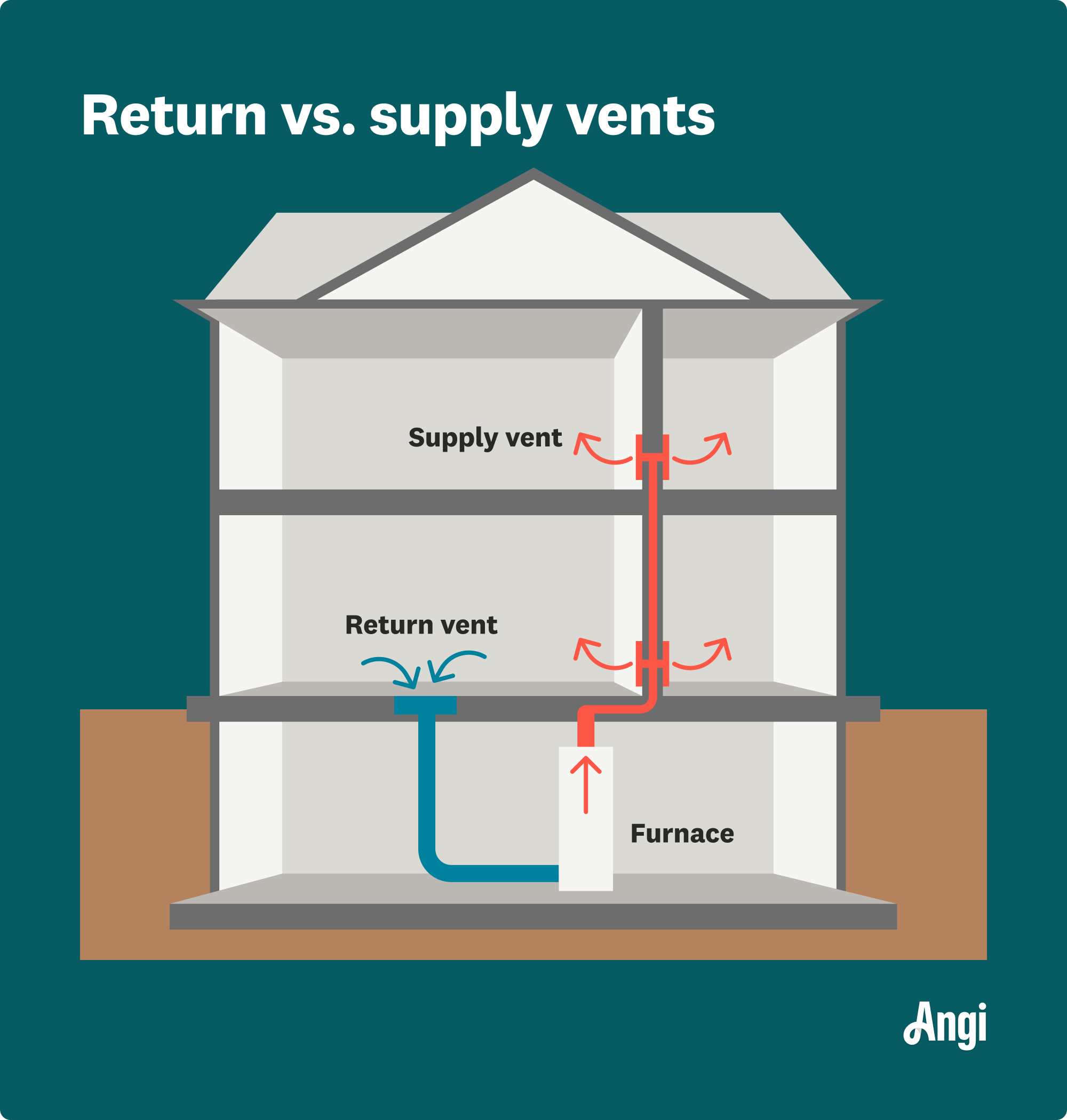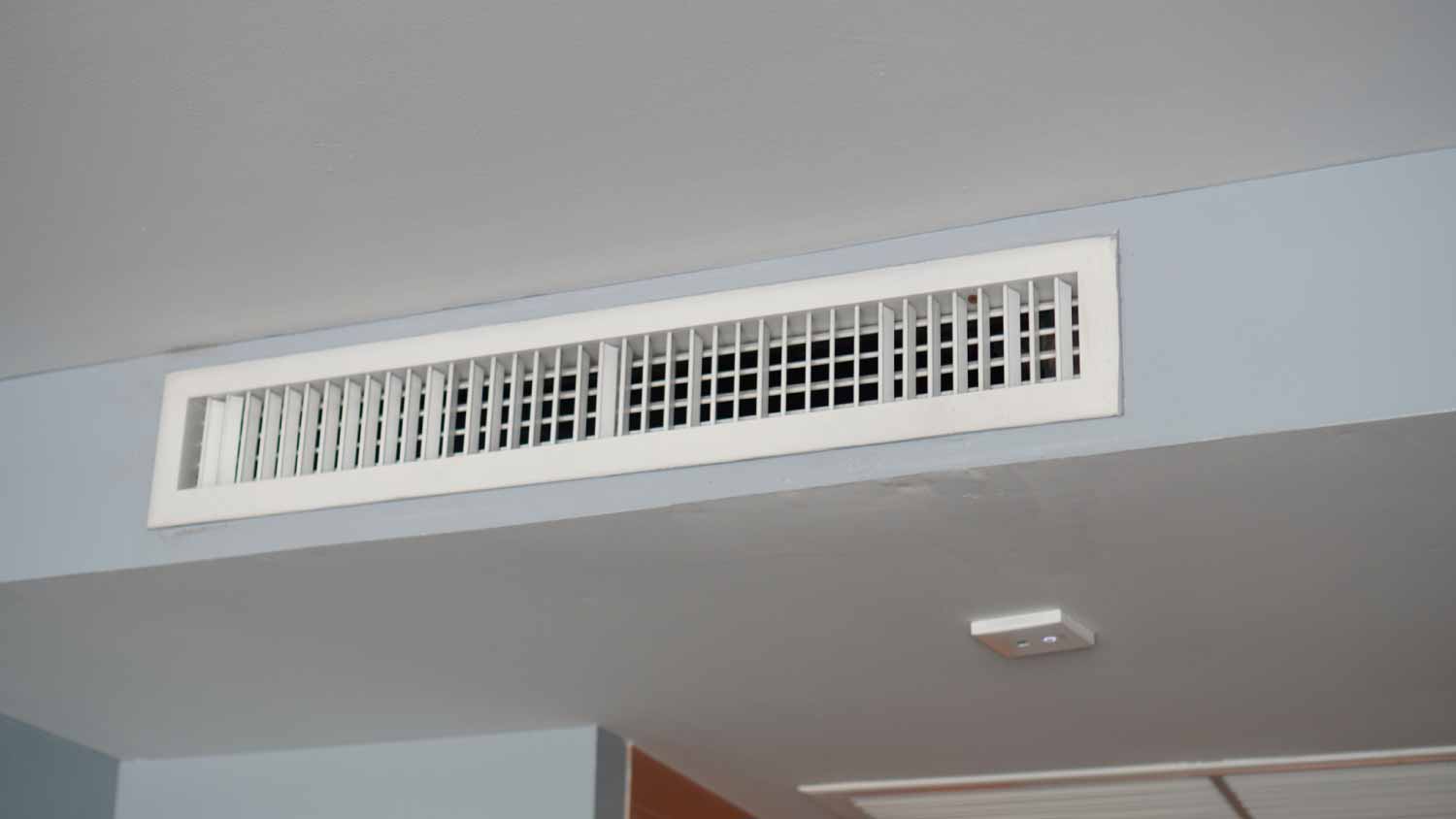
If you’re having problems with your air conditioner’s condenser, it may be time for an upgrade. Learn about the cost to replace an AC condenser in this guide.
Let’s remove the air of mystery around return vents


A return vent helps ensure proper air circulation in your home.
While one per room is standard, you may need more depending on your home size and HVAC system type.
Installing additional return vents costs $350 per vent on average.
Return vents are an important part of your HVAC system, as they allow air to travel from room to room, keeping your home temperature, air pressure, and air quality up to standard. However, adding too many return vents can be costly and cause damage to your home, so you want to ensure you get the right number without going overboard. This guide will help you determine how many return vents you’ll need for your home to ensure your HVAC system works well.

Return vents are visible parts of your HVAC system, recognizable as the grilles on your home's wall, floor, or ceiling. Their purpose is to bring air back to the heating and cooling system. Return vents are critical for effective air circulation, and a lack of return vents can cause hot or cold spots, duct leaks, and poor airflow.
The difference between a return vent versus a supply vent is the direction in which the air flows. Supply vents push cooled or heated air into the room, and return vents draw it back into the HVAC system.

The standard number of return vents is one per room to ensure that each room is properly vented and has access to your home's HVAC system. However, there are a few things to consider when determining the number of vents you need.
Quality ductwork will increase the efficiency of your HVAC, sometimes by 20% to 30%. This is because there is reduced air leakage due to better insulation and more optimized airflow. This means your HVAC doesn't have to work as hard to keep the desired temperature, so it uses less energy.
The general consensus among professionals is one return vent for every 100 to 150 feet of living space to ensure optimal airflow in your home. This covers most room sizes, but if you’d be more comfortable with another return vent for larger rooms, strategically place them so they have enough space to work effectively.
The type and age of your HVAC system are important factors when deciding on the number of return vents. High-velocity HVACs, for example, operate more effectively with multiple, smaller vents that help them capture more air in a room.
Your return vent location should reflect the temperature system it connects to. Cool air is lower to the ground, so if your return vents affect the cooling system, they should be placed lower on the wall or floor. Warm air return vents are often placed near the ceiling to gather rising warm air.
If your return vents connect to heating and cooling, place them in a strategic location that provides a balance. This may result in multiple return vents to account for the fluctuating temperature.
The cost to install a return vent can range from $250 to $500, with the average homeowner paying $350 per vent. The cost can be impacted by the kind of ductwork in your home, the size of the return vent, and the labor involved with installation. There are also add-ons to help make your return vents more effective, such as duct cleaning, adding duct insulation, and getting rid of any asbestos or mold that may have accumulated throughout the project.
Most homeowners don’t have the HVAC experience necessary to install return ductwork. This project involves cutting drywall and ductwork while considering placement and sizing to help the air circulate in your home effectively. While doing it yourself may save you the labor costs of $5 to $10 per linear foot, improper work can cause much more costly damage. A local duct installer can handle the job and ensure you have enough return vents for adequate air circulation.
Bruce and Nate were exceptional!! They tiled our basement shower and it looks amazing!!! They made the design look outstanding - so visually pleasing. Bruce also guided us in what kind of grout would go well with the tile and pebble flooring we picked out - he's the expert! He also put in 3...
Residential cleaning, commercial cleaning and apoxy flooring. The workmanship is outstanding, my epoxy flooring has been there for 10yrs and still shinny.
Got a ballpark price from Joe the owner - about $400 for parts and labor - about what I expected. Joe (owner) continued to call me for several days asking to install the gas line, trying to close the deal. Federal tax refund check arrived, gas appliances bought, ready for install. Called...
From average costs to expert advice, get all the answers you need to get your job done.

If you’re having problems with your air conditioner’s condenser, it may be time for an upgrade. Learn about the cost to replace an AC condenser in this guide.

HVAC replacement costs depend on a lot of factors, like unit type, size, and labor. See what you can expect to pay for HVAC replacement here.

When your heat goes out, it can cause a bit of a panic. But knowledge is power, so let's go over radiator repair costs before that happens.

Forced-air systems provide a reliable source of warmth for your home, but what is forced-air heating, exactly? Let’s break it down.

Wondering how to bleed a baseboard heater without a bleed valve? Here’s how to remove trapped air the old-fashioned way, with a boiler drain and water replacement.

A whole-house humidifier costs between $400 and $800, but can have an ROI of 40%. Learn if adding this HVAC appliance is worth it for you.